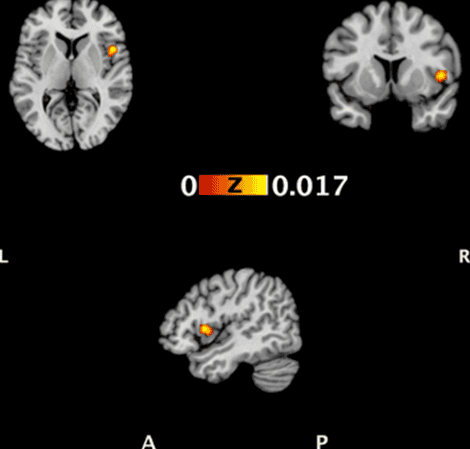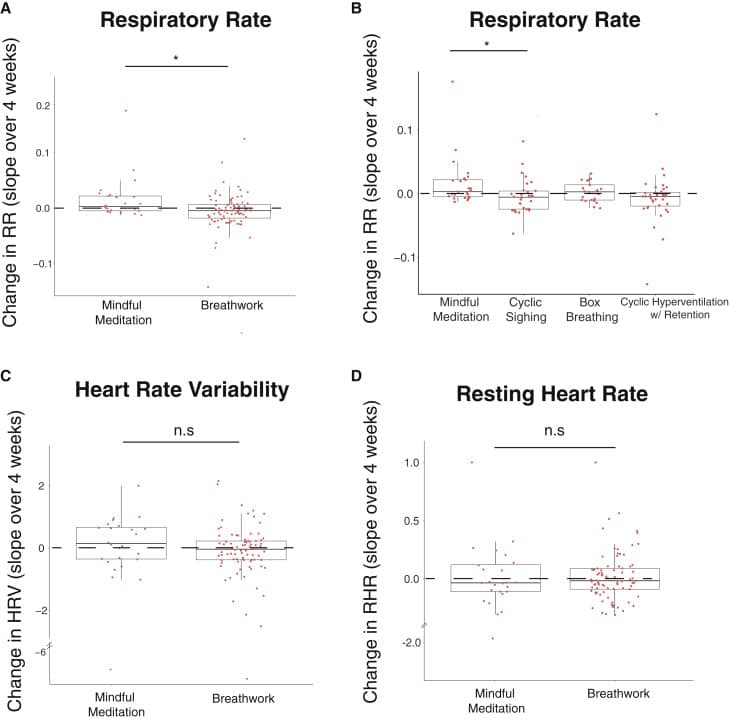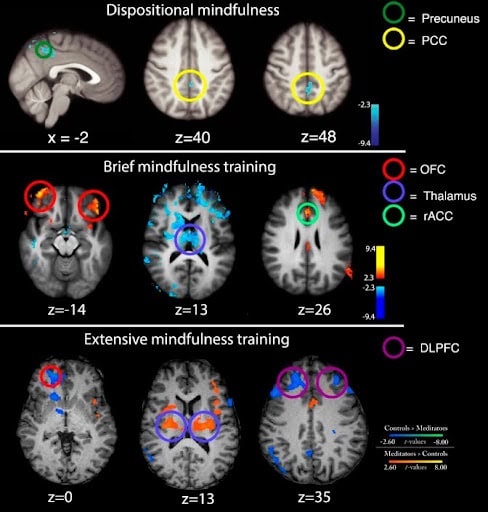
Elizabeth Lehmann
(Mindfulness facilitator)
Mindfulness has become a buzzword for mental wellbeing, but it’s far from one-size-fits-all. From body scans to mindful movement, different techniques engage the mind in unique ways.
Here’s a breakdown of popular types, backed by science, to help you find the right fit.
Body Scan
The origins of body scan could be traced back to Vipassana meditation, a technique of self-introspection that was handed down by buddhist monks in Myanmar.
Sayagyi U Ba Khin, who was the founder of the International Meditation Centre in Yangon (Burma), taught this type of meditation where S.N. Goenka (Indian teacher of Vipassana meditation) learned the technique and took it to India, later on bringing it to the West.
In the stress clinic at the Massachusetts Medical Centre where Jon Kabat-Zin guided Mindfulness Meditation classes, they use body-scanning as the first technique to get patients to experience a connection between their body and their mind.
Their 8-week program is dedicated to developing a concentration in breathing, and the sensations in the body.
This technique is done lying down for 45 minutes while exploring and attending each part of the body objectively, and observing whatever sensations that might come up.

Results of the ALE (Anatomical Likelihood Estimation) meta-analysis. The highlighted cluster represents a significant convergence of structural increase in mindfulness intervention participants compared to controls. The cluster is depicted on an MNI (Montreal Neurological Institute) standard brain template and the colour indicates the ALE values. L = left; R = right, A = anterior, P = posterior. Show less
The data from a Mindfulness-based randomised controlled trials shows evidence of structural brain changes following mindfulness intervention. The repeated practice activates these regions of the brain.[1]
Jotting down your experience after meditation or a yoga class is an excellent way to get to know yourself better. Introspecting after the practice is a useful tool to find clarity and understanding.
Capturing your thoughts, feelings, emotions and body sensations could help put into perspective what goes on unnoticed at the subconscious levels.
It is a form of stress relief and self-expression. Journalling requires time and commitment, start small, and be consistent.
Process the events in your day, with gratitude, and self reflection. Journalling cultivates a sense of compassion and empathy for yourself and others.
Mindful journalling invites reflection on thoughts and emotions through writing. This process fosters self-awareness and emotional regulation.
A 2018 study in JMIR Mental Health showed that expressive writing improved mood and reduced depressive symptoms among college students. It’s a useful tool for those who process experiences best through language and storytelling.[2]
Breathing is the first thing we do when we are born and the last thing when we die. Breath is the first form of anchor to bring the wandering mind back to the present moment.
It’s the most obvious and accessible tool, we can use it anytime, anywhere without even being noticed by others.
Funnily enough, when people find themselves in a shocking situation others would say “Breathe, just breathe.” We tend to hold our breath in when stressed and breathe out when relieved.
Mindful breathing is a form of diaphragmatic breathing
It consists of lying down, putting a hand on the belly, and taking a deep slow breath in, and a slow breath out, noticing the belly rise and fall.
Focusing on the breath is one of the simplest yet most effective mindfulness tools. Studies like the 2010 research in Consciousness and Cognition found that even 10 minutes of mindful breathing improves attention and reduces mind-wandering. It’s ideal for beginners or anyone looking for a quick reset.[3]
RELATED — How we breathe: different types of breathing
This practice relaxes the body and the mind, giving space to think, and time to clear your thoughts and respond rather than react to a situation. During the practice focusing on breathing helps us reach deeper calmness and awareness.
Formal mindful breathing practice requires commitment and discipline, to sit quietly for a certain period, keeping the mind in the present moment.
You will develop the skill of staying in the here and the now for a long time, which is central to any other meditation technique you might do.
A randomised controlled study comparing the effects of daily 5-minute breathing exercises and mindfulness meditation over one month. The researchers assessed acute and long-term impacts on
- mood
- sleep disturbances
- anxiety
- other physiological measures
Breathwork, especially cyclic sighing, showed greater improvements in positive affect and respiratory rate reduction compared to mindfulness meditation.

Slope of respiratory rate (A), HRV (C), and RHR (D) over the course of the study in mindfulness meditation (n = 22) and all breathwork (n = 78) groups. Slope of respiratory rate in individual breathwork groups (cyclic sighing: n = 27, box breathing: n = 19, cyclic hyperventilation: n = 32) compared with mindfulness meditation (B).
These benefits are linked to enhanced vagal function and interoceptive awareness.
The study highlights the superior mood-regulating effects of controlled breathing over mindfulness meditation and underscores the potential of breathwork in clinical populations with interoceptive psychopathology.[4]
Mindfulness-Based Stress Reduction is a non-pharmacological approach to chronic illnesses, and is a therapeutic technique which can be used along with other therapies to help people cope with physical and mental issues.
At the University of Massachusetts Medical School, Jon Kabat-Zinn started the 8-week program to treat patients with chronic pain. The studies have demonstrated the great success of the program in reducing the levels of stress and pain in those who undergo MBSR.[5]
A seminal study by Kabat-Zinn et al. demonstrated that a 10-week MBSR program reduced pain reports and improved vitality in chronic pain patients, with effects maintained at a 15-month follow-up.
However, the study lacked a control group, necessitating further research. Subsequent studies have shown that MBSR can reduce pain catastrophising more effectively than cognitive-behavioural therapy (CBT) in chronic low-back pain patients, although long-term benefits may require ongoing practice.
Notably, a study by Cherkin et al. found that both MBSR and CBT significantly improved
- functional limitations
- pain-related distress
- pain intensity in chronic lower back pain patients
compared to standard care, with benefits persisting at 8, 26 and 52-week follow-ups.

First row (dispositional mindfulness): Greater deactivation of the posterior cingulate cortex (PCC)/precuneus was associated with higher trait mindfulness (Freiburg Mindfulness Inventory) and lower pain during noxious heat stimulation.
Second row (brief mindfulness training): Higher mindfulness meditation-induced activation of the bilateral orbitofrontal cortex (OFC), rostral anterior cingulate cortex (rACC), and greater thalamic deactivation was associated with greater pain relief during noxious heat.
Third row (extensive mindfulness training): When compared with age-matched controls, adept Zen meditators exhibited significant decoupling in low-level pain-related brain activation (thalamus) and brain regions that process appraisals and affect (medial OFC [mOFC] and dorsolateral PFC [DLPFC]) during noxious heat stimulation.
These findings suggest that mindfulness-based interventions can serve as effective, non-pharmacological approaches to managing chronic pain, offering patients tools to modulate their experience of pain through mental training.[6]
1. Is guided meditation the same as mindfulness?
Guided meditation can include mindfulness but not all guided meditations are mindful in nature.
Mindfulness meditation is mainly self-guided but it can be guided as we learn to focus the mind.
Guided meditation is a method in which we are guided to form mental images to relax the mind.
2. What is mindful drawing?
Mindful drawing is a practice where the principles of mindfulness are applied while drawing, deliberately paying attention to the present moment, without judging, awareness of the sensations, thoughts and emotions, and a curious and kind attitude.[5]
3. Are there any disadvantages to mindfulness?
Mindfulness meditation is one of many techniques to treat stress and anxiety; different individuals react differently to it.
People with serious deep trauma and depression could experience adverse effects.[7]
Elizabeth is a Certified Spanish – English Interpreter, and over the years has worked for various New Zealand agencies. Given that interpreting requires a high level of concentration and a good memory among many other demanding mental skills, Elizabeth found mindfulness meditation a useful tool to calm her mind and improve her performance…
If you would like to learn more about Elizabeth , see Expert: Elizabeth Lehmann.
References
(1) Siew, S., Yu, J. Mindfulness-based randomized controlled trials led to brain structural changes: an anatomical likelihood meta-analysis. Sci Rep 13, 18469 (2023). https://doi.org/10.1038/s41598-023-45765-1
(2) Baikie, K. A., & Wilhelm, K. (2005). Emotional and physical health benefits of expressive writing. Advances in Psychiatric Treatment, 11(5), 338–346. https://doi.org/10.1192/apt.11.5.338
(3) Zeidan, F., Johnson, S. K., Diamond, B. J., David, Z., & Goolkasian, P. (2010). Mindfulness meditation improves cognition: Evidence of brief mental training. Consciousness and Cognition, 19(2), 597–605.
(4) Balban MY, Neri E, Kogon MM, Weed L, Nouriani B, Jo B, Holl G, Zeitzer JM, Spiegel D, Huberman AD. Brief structured respiration practices enhance mood and reduce physiological arousal. Cell Rep Med. 2023 Jan 17;4(1):100895. doi: 10.1016/j.xcrm.2022.100895. Epub 2023 Jan 10. PMID: 36630953; PMCID: PMC9873947. https://www.ncbi.nlm.nih.gov/pmc/articles/PMC9873947/
(5) Kabat-Zinn, J. Full Catastrophe Living Using the Wisdom of Your Body and Mind to Face Pain, Stress and Illness. (2005) New York: Delta trade paperback reissue.
(6) Zeidan F, Baumgartner JN, Coghill RC. The neural mechanisms of mindfulness-based pain relief: a functional magnetic resonance imaging-based review and primer. Pain Rep. 2019 Aug 7;4(4):e759. doi: 10.1097/PR9.0000000000000759. PMID: 31579851; PMCID: PMC6728003. https://www.ncbi.nlm.nih.gov/pmc/articles/PMC6728003/
(7) Farias M, Wikholm C. Has the science of mindfulness lost its mind? BJPsych Bull. 2016 Dec;40(6):329-332. Doi: 10.1192/pb.bp.116.053686. PMID: 28377813; PMCID: PMC5353526. https://www.ncbi.nlm.nih.gov/pmc/articles/PMC5353526/






